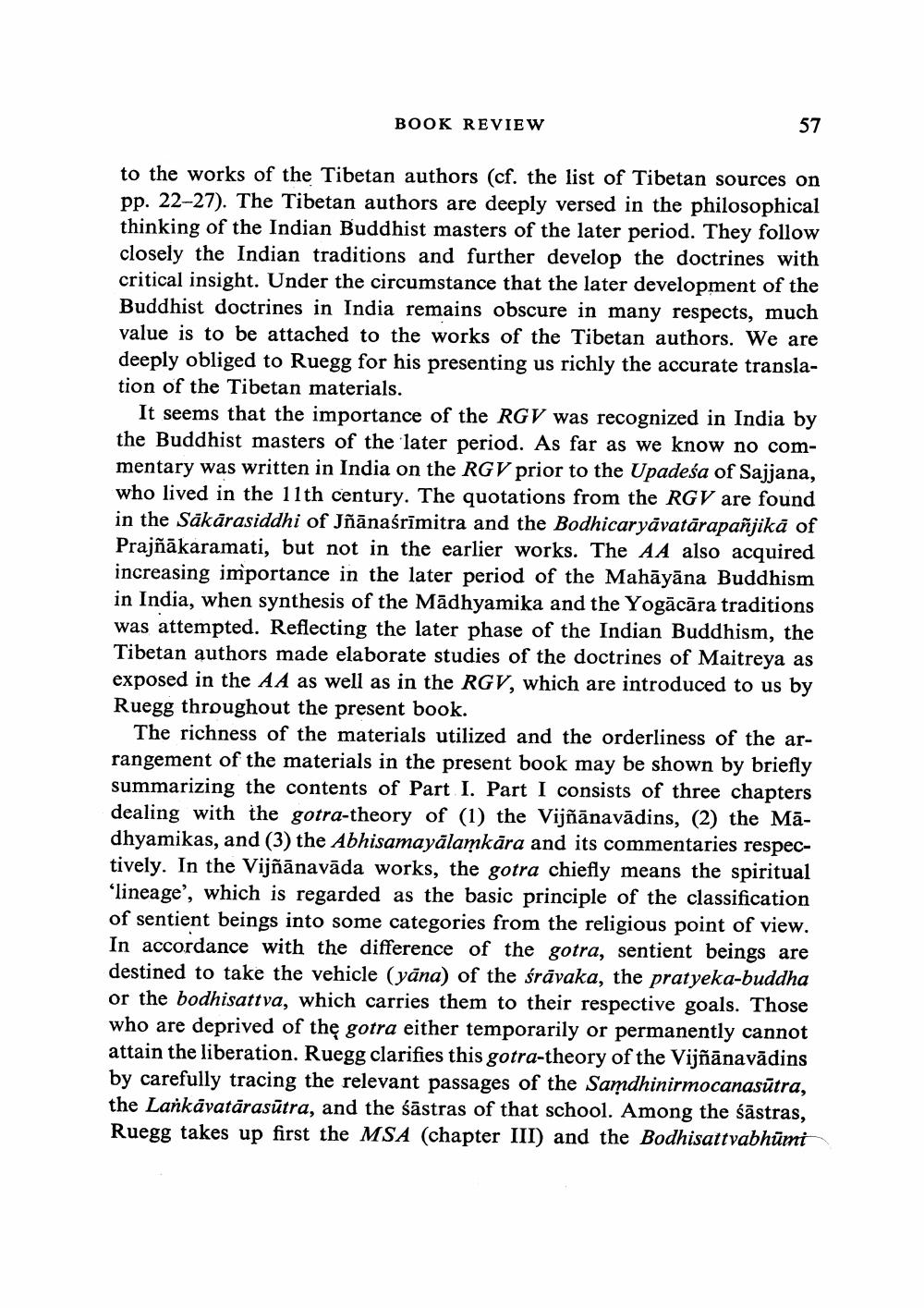________________ BOOK REVIEW to the works of the Tibetan authors (cf. the list of Tibetan sources on pp. 22-27). The Tibetan authors are deeply versed in the philosophical thinking of the Indian Buddhist masters of the later period. They follow closely the Indian traditions and further develop the doctrines with critical insight. Under the circumstance that the later development of the Buddhist doctrines in India remains obscure in many respects, much value is to be attached to the works of the Tibetan authors. We are deeply obliged to Ruegg for his presenting us richly the accurate translation of the Tibetan materials. It seems that the importance of the RGV was recognized in India by the Buddhist masters of the later period. As far as we know no commentary was written in India on the RGV prior to the Upadesa of Sajjana, who lived in the 11th century. The quotations from the RGV are found in the Sakarasiddhi of Jnanasrimitra and the Bodhicaryavatarapanjika of Prajnakaramati, but not in the earlier works. The AA also acquired increasing importance in the later period of the Mahayana Buddhism in India, when synthesis of the Madhyamika and the Yogacara traditions was attempted. Reflecting the later phase of the Indian Buddhism, the Tibetan authors made elaborate studies of the doctrines of Maitreya as exposed in the AA as well as in the RGV, which are intr Ruegg throughout the present book. The richness of the materials utilized and the orderliness of the arrangement of the materials in the present book may be shown by briefly summarizing the contents of Part I. Part I consists of three chapters dealing with the gotra-theory of (1) the Vijnanavadins, (2) the Madhyamikas, and (3) the Abhisamayalamkara and its commentaries respectively. In the Vijnanavada works, the gotra chiefly means the spiritual 'lineage', which is regarded as the basic principle of the classification of sentient beings into some categories from the religious point of view. In accordance with the difference of the gotra, sentient beings are destined to take the vehicle (yana) of the sravaka, the pratyeka-buddha or the bodhisattva, which carries them to their respective goals. Those who are deprived of the gotra either temporarily or permanently cannot attain the liberation. Ruegg clarifies this gotra-theory of the Vijnanavadins by carefully tracing the relevant passages of the Samdhinirmocanasutra, the Lankavatarasutra, and the sastras of that school. Among the sastras, Ruegg takes up first the MSA (chapter III) and the Bodhisattvabhumi




